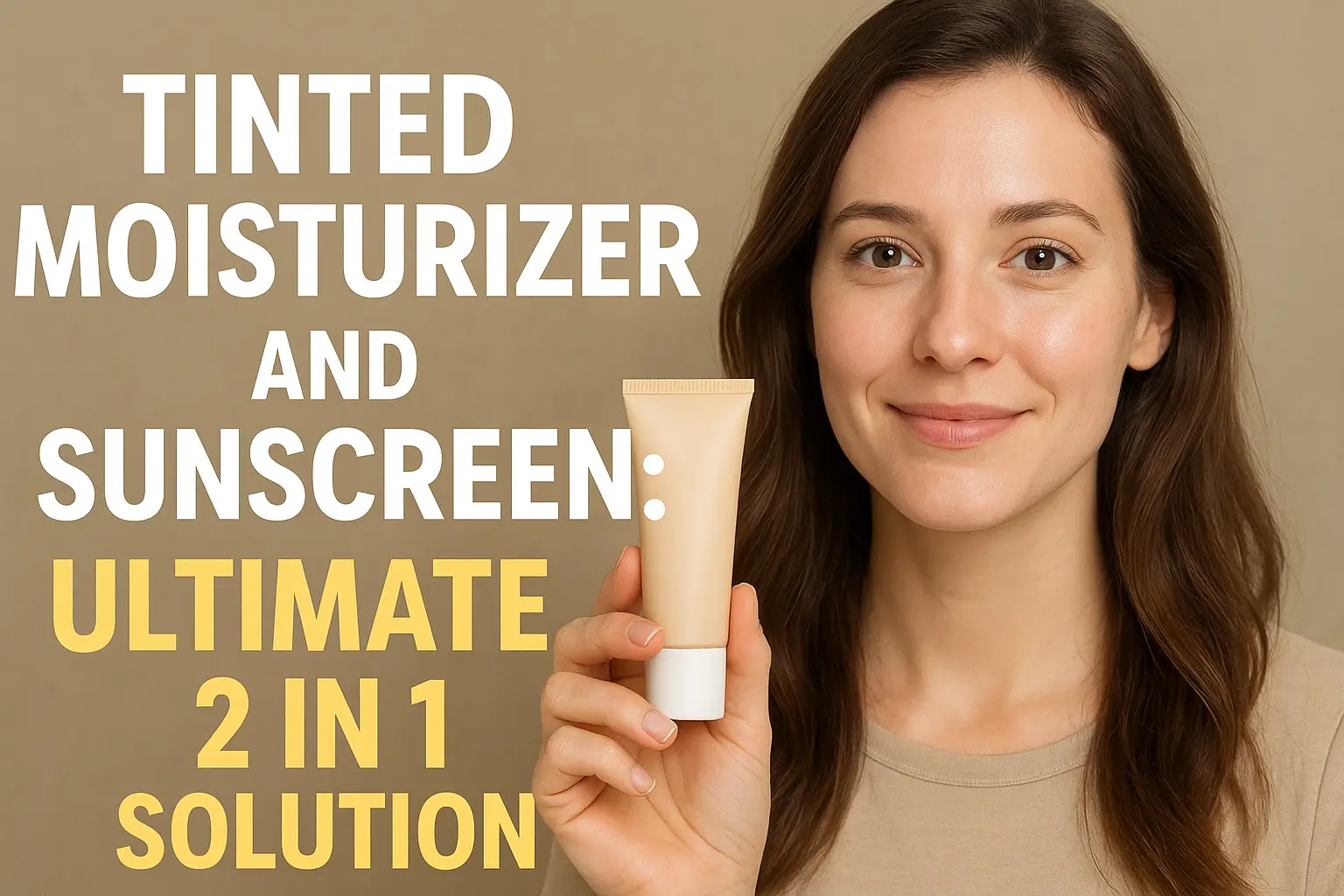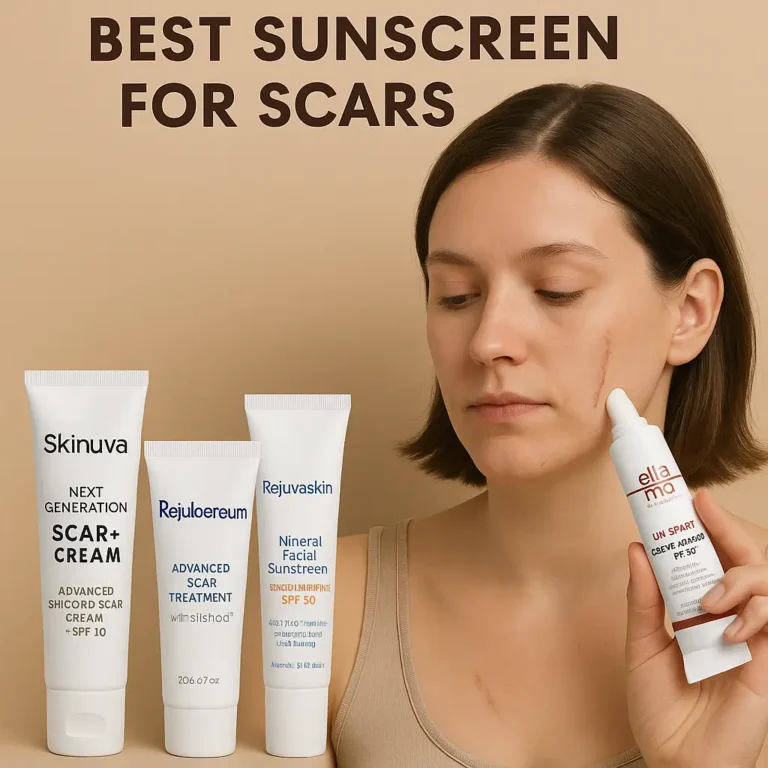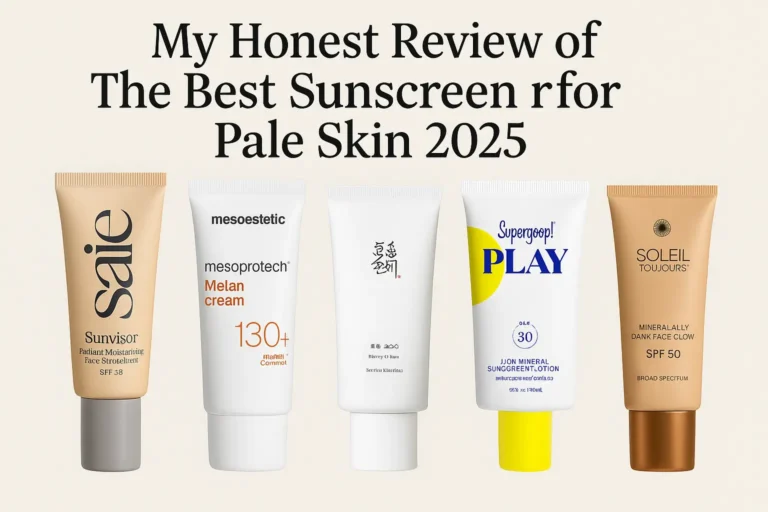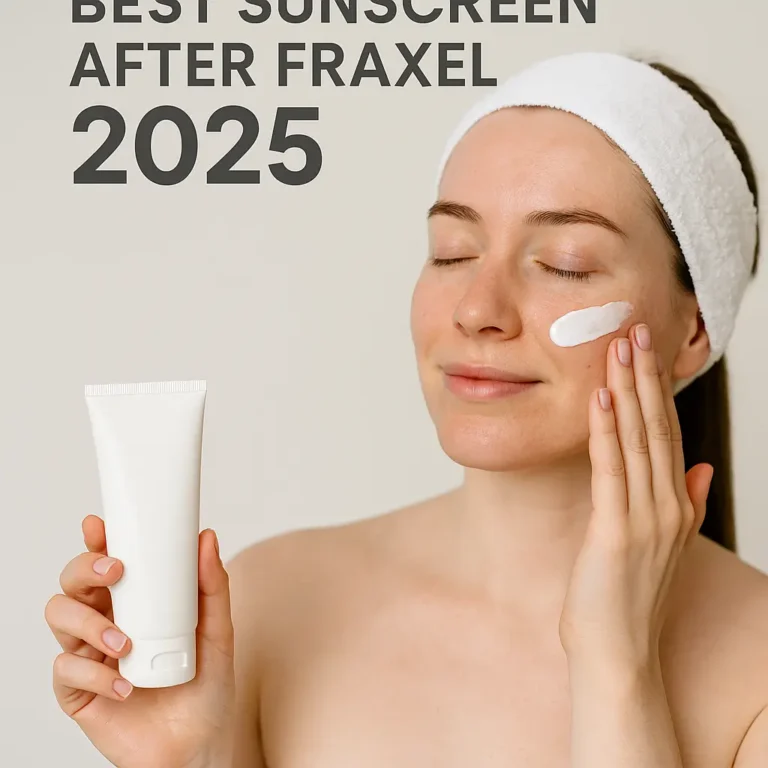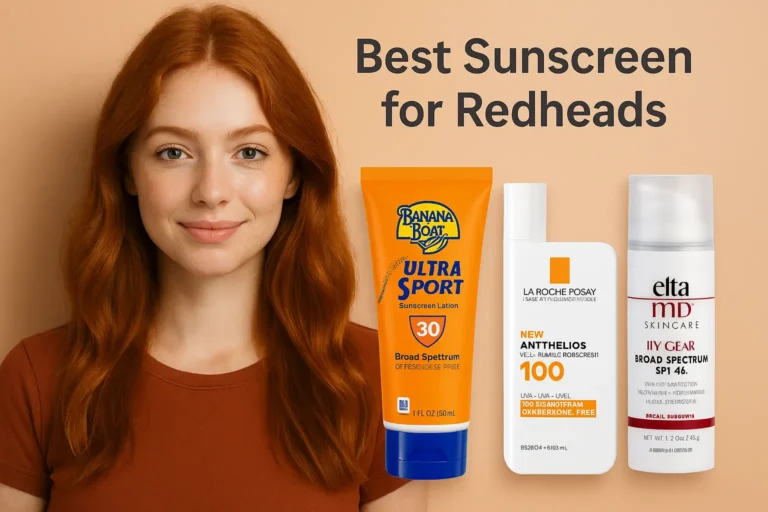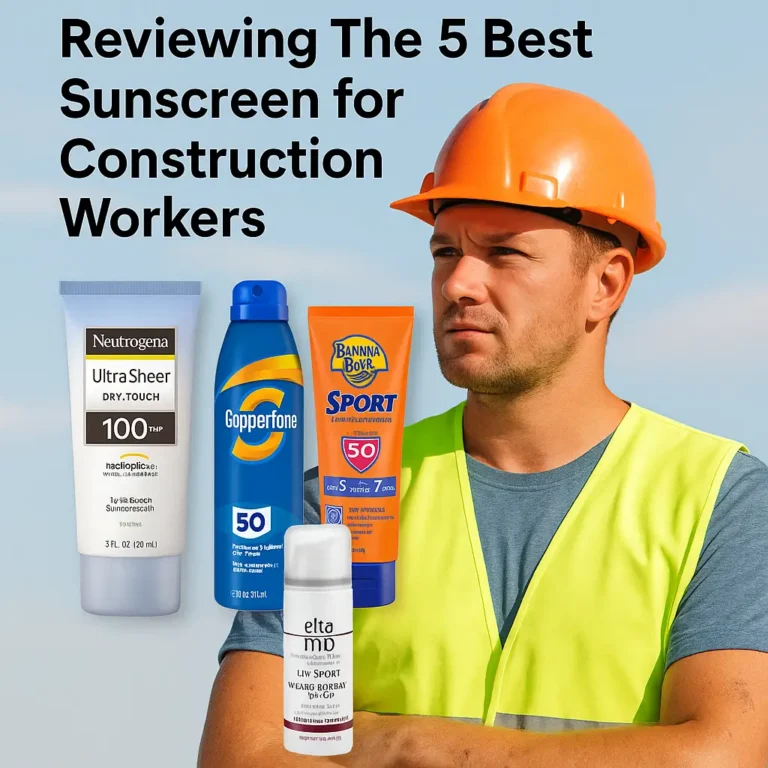Tinted Moisturizer and Sunscreen: Ultimate 2 in 1 Solution
I’ll never forget the morning I realized I was running late for an important client meeting. My usual elaborate skincare routine—moisturizer, wait five minutes, sunscreen, wait another five minutes, then foundation—simply wasn’t going to happen. That’s when I grabbed a sample of tinted moisturizer with SPF that had been sitting in my drawer for weeks.
The result? Not only did I make it on time, but my skin looked better than it had in months. Natural, glowing, protected. That single rushed morning changed my entire approach to daily skincare.
If you’ve been wondering whether tinted moisturizer and sunscreen combinations can truly replace your multi-step routine, you’re asking the right question. Today, I’m breaking down everything you need to know about these multitasking products that have revolutionized how millions of people approach daily sun protection and coverage.
Key Takeaways
- Tinted moisturizer with SPF combines 3-4 products into one (moisturizer, sunscreen, coverage, often primer)
- SPF 30-50 is the gold standard for adequate daily protection
- Mineral-based formulas work best for sensitive skin and immediate protection
- Application technique matters – you need 1/4 teaspoon for face coverage
- Not all tinted moisturizers provide sufficient sun protection – checking ingredients is critical
- The best products balance coverage, hydration, and broad-spectrum protection
- Reapplication every 2 hours is still necessary for extended sun exposure
Why Tinted Moisturizer and Sunscreen Changed My Skincare Game
Before diving into product specifics, let me explain why combining tinted moisturizer and sunscreen makes so much sense—both scientifically and practically.
Traditional skincare routines require layering multiple products, each with its own wait time. You’re supposed to let moisturizer absorb before applying sunscreen, then wait again before makeup. For someone with a busy schedule (which is most of us), this system falls apart quickly.
The Problem with Traditional Multi-Step Routines
Time Consumption: The recommended routine takes 15-20 minutes Product Pilling: Layering multiple formulas often causes balling and flaking Inconsistent Protection: Rushing leads to inadequate sunscreen application Financial Burden: Buying 4-5 separate products adds up quickly Decision Fatigue: Too many choices lead to analysis paralysis
When I switched to a quality tinted moisturizer with SPF, I eliminated three decision points from my morning and cut my routine down to five minutes. More importantly, I started applying sunscreen consistently every single day because the process became effortless.
The Science Behind Tinted Moisturizer and Sunscreen
Understanding how these combination products work helps you choose the right formula for your needs.
How Tinted Moisturizers Provide Sun Protection
There are two main types of sunscreen protection in tinted moisturizers:
Chemical Sunscreens
- Absorb UV rays and convert them to heat
- Examples: Avobenzone, Octinoxate, Oxybenzone
- Pros: Lightweight, blends invisibly
- Cons: Can irritate sensitive skin, requires 15-minute wait time
Physical (Mineral) Sunscreens
- Create a physical barrier that reflects UV rays
- Examples: Zinc Oxide, Titanium Dioxide
- Pros: Works immediately, gentle on sensitive skin
- Cons: Can leave slight white cast (though modern formulas minimize this)
The tint component serves multiple purposes:
- Neutralizes the white cast from mineral sunscreens
- Evens skin tone for natural coverage
- Contains iron oxides which protect against visible light and blue light damage
- Provides buildable coverage from sheer to medium
The Coverage-Protection Balance
Here’s something critical that took me months to learn: the amount of product needed for adequate sun protection often exceeds what gives you your desired coverage level.
SPF ratings are tested using 2mg per square centimeter of skin. For your face, that’s approximately:
- 1/4 teaspoon or 1.2ml for face only
- 1/3 teaspoon for face and neck
Most people apply far less when using tinted products because they’re focused on coverage rather than protection. This is the single biggest mistake I see people make with tinted moisturizer and sunscreen combinations.
What to Look for in Tinted Moisturizer and Sunscreen Products
After testing over 30 different formulas in the past two years, I’ve identified the non-negotiables that separate excellent products from disappointing ones.
Essential Features Checklist
SPF Rating
- Minimum SPF 30 for daily use
- SPF 40-50 for extended outdoor activities
- Broad-spectrum protection (blocks both UVA and UVB)
Coverage Level
- Sheer: 10-20% coverage, for even-toned skin
- Light: 20-40% coverage, for minor imperfections
- Medium: 40-60% coverage, for more noticeable concerns
Skin Type Compatibility
- Oily skin: Oil-free, mattifying formulas with silica or clay
- Dry skin: Hyaluronic acid, glycerin, squalane-enriched formulas
- Combination skin: Lightweight, adaptable formulas
- Sensitive skin: Fragrance-free, mineral-based options
Additional Beneficial Ingredients
- Hyaluronic Acid: Intense hydration
- Niacinamide: Brightening and pore-refining
- Vitamin C: Antioxidant protection
- Peptides: Anti-aging benefits
- Iron Oxides: Blue light protection
Red Flags to Avoid
Through trial and error (mostly error), I’ve learned to immediately reject products with these characteristics:
- No broad-spectrum designation – UVA rays still cause damage
- Heavy fragrance – Indicates potential irritants
- Comedogenic ingredients (if acne-prone) – Will clog pores
- No shade range – One size never fits all
- Alcohol-heavy formulas – Can dry out skin
Top Tinted Moisturizer and Sunscreen Combinations for 2025
Based on extensive testing, research, and analysis of customer feedback, here are the standout products across different categories and price points.
Best Overall: Laura Mercier Tinted Moisturizer SPF 30
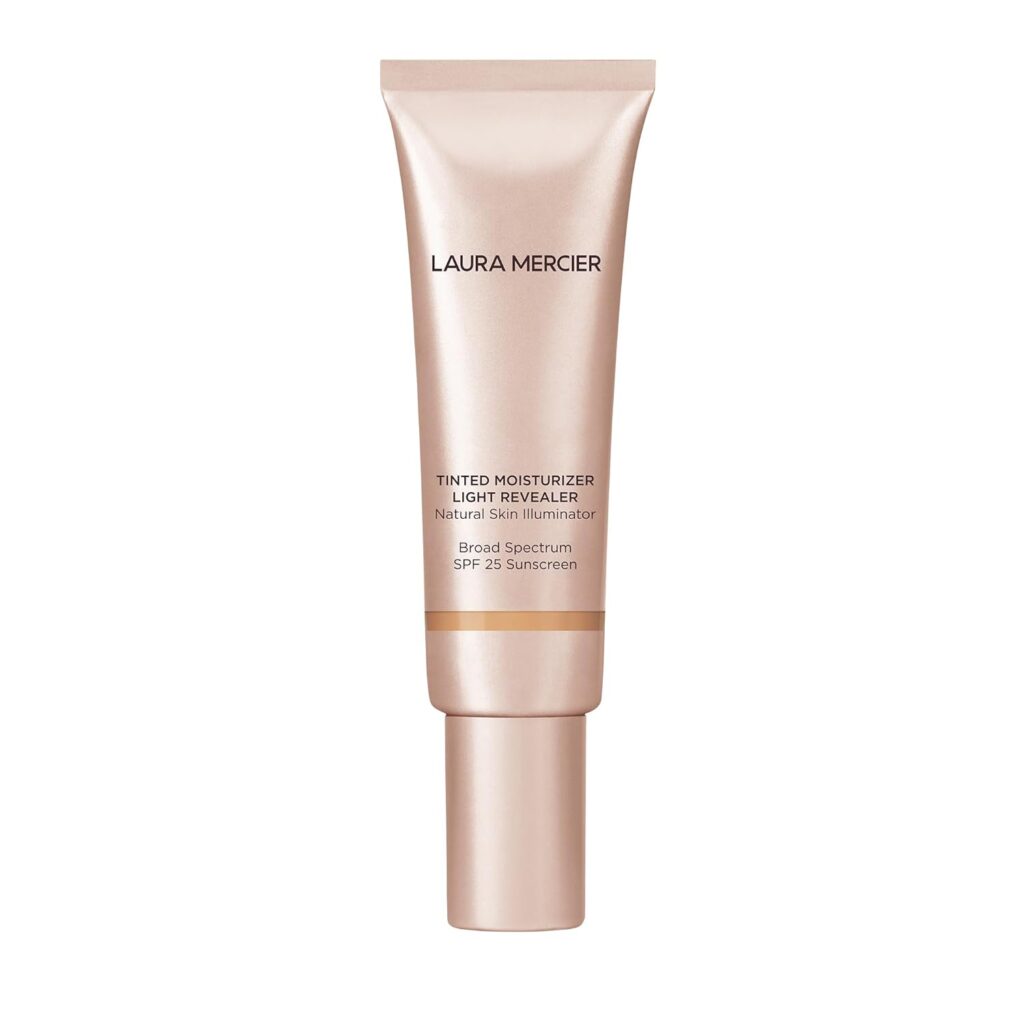
Chemical + Physical Hybrid Shade Range: 20 shades
Why It’s My Top Pick: This has been my daily driver for over a year. The formula provides beautiful, natural coverage that actually looks like skin. The SPF 30 broad-spectrum protection includes both chemical and mineral filters for comprehensive coverage.
Best For: Normal to dry skin, those seeking the perfect “your skin but better” finish
Pros:
- Extensive shade range accommodates various undertones
- Long-wearing without feeling heavy
- Contains macadamia and kukui seed oils for hydration
- Buildable formula works for varying coverage needs
Cons:
- Higher price point
- May be too dewy for very oily skin types
- Requires reapplication for extended sun exposure
Available at Amazon
Best for Oily Skin: IT Cosmetics CC+ Cream SPF 50+
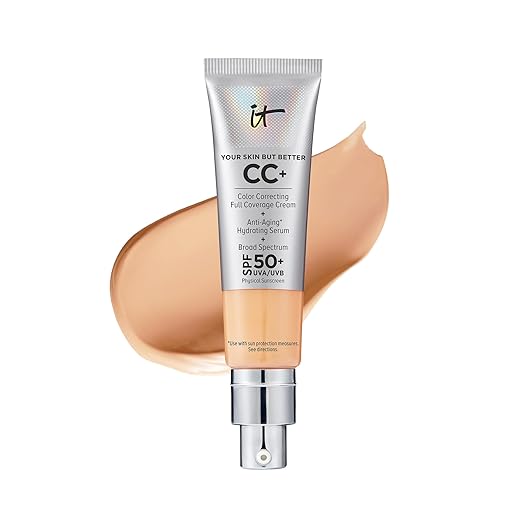
Physical Shade Range: 14 shades
My Experience: During humid summer months, this became my go-to. The SPF 50+ physical protection (titanium dioxide and zinc oxide) provides excellent coverage without the greasiness I experienced with other formulas.
Best For: Oily, combination, or acne-prone skin
Pros:
- Highest SPF rating in this category
- Contains anti-aging peptides and hyaluronic acid
- Oil-free formula with semi-matte finish
- Full coverage that’s still breathable
Cons:
- Limited shade range
- Can be heavy for minimal makeup days
- Requires thorough blending to avoid streaking
Available at Amazon
Best Budget Option: CeraVe Hydrating Face Sunscreen SPF 50 with Skin Tint
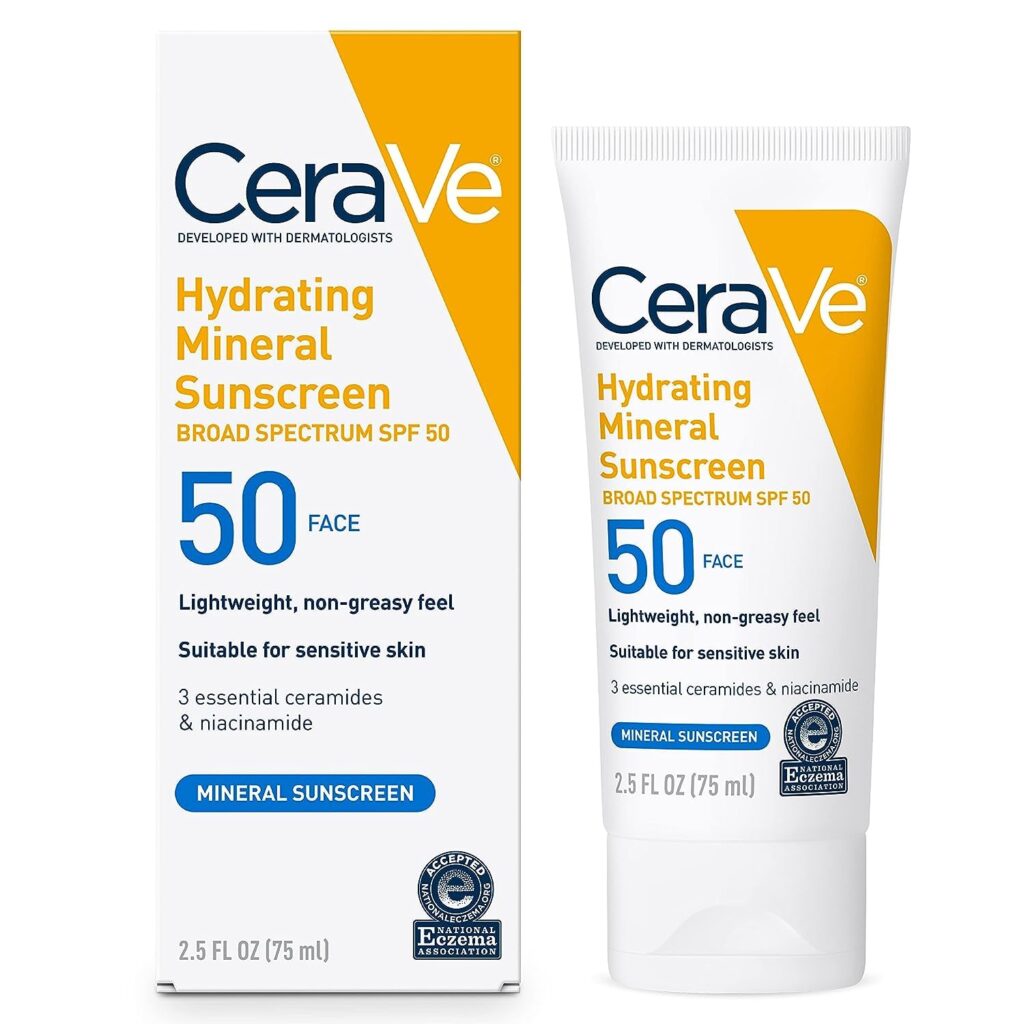
Sheer to Light SPF Type: Chemical Shade Range: Universal tint
Why It’s a Winner: This drugstore gem punches way above its weight class. At a fraction of the price of luxury brands, it delivers reliable SPF 50 protection with a subtle tint that works across multiple skin tones.
Best For: Budget-conscious shoppers, minimal makeup lovers
Pros:
- Exceptional value for money
- Developed with dermatologists
- Contains ceramides for skin barrier support
- Fragrance-free and non-comedogenic
Cons:
- Universal tint won’t work for all skin tones
- Lighter coverage than premium options
- Can pill when layered with some products
Available at Amazon
Best for Dry Skin: NARS Pure Radiant Tinted Moisturizer SPF 30
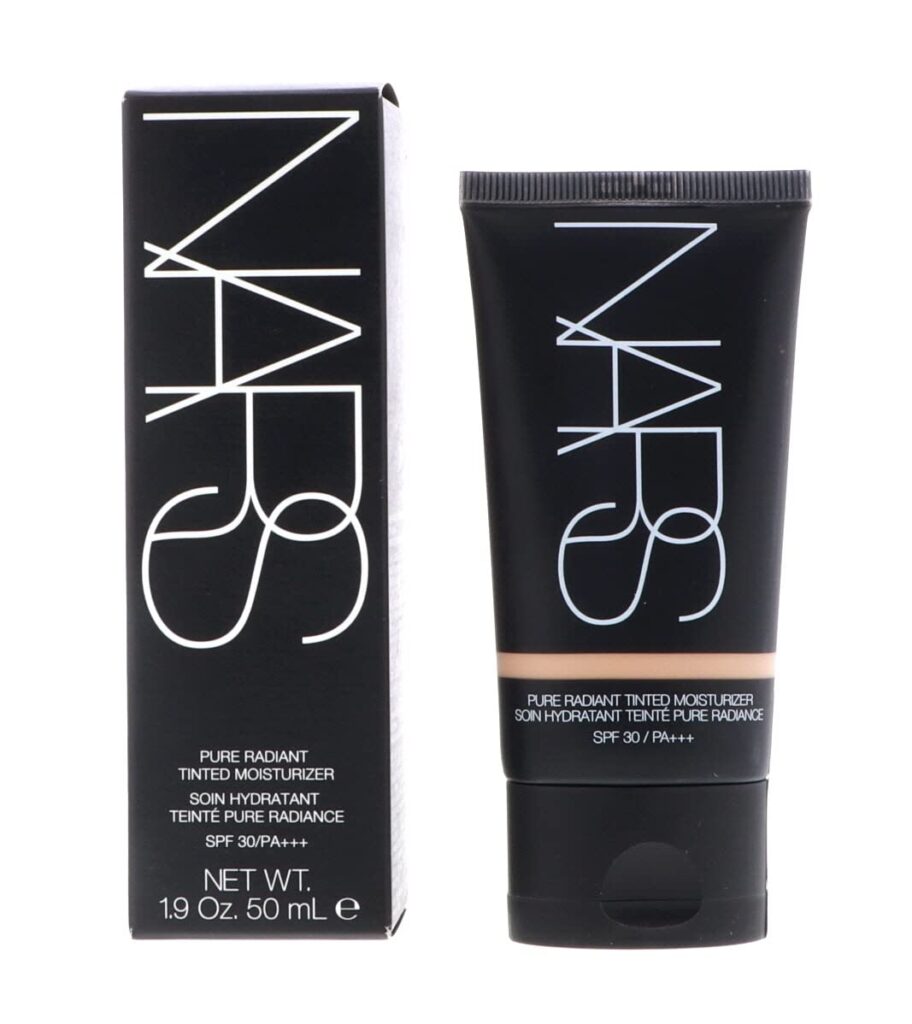
Personal Note: When winter hits and my skin becomes desert-dry, this is what I reach for. The radiant finish looks like I’m glowing from within, not sitting on top of flaky skin.
Best For: Dry, dehydrated, or mature skin
Pros:
- Intensely hydrating formula with hyaluronic acid
- Natural radiant finish (not glittery or shimmery)
- Lightweight despite being moisturizing
- Good shade selection
Cons:
- May be too dewy for oily zones
- Requires powder for longevity in humid conditions
- Premium pricing
Available at Amazon
Best for Sensitive Skin: EltaMD UV Daily Tinted Broad-Spectrum SPF 40

Why It’s Ideal for Sensitivity: This dermatologist favorite uses only zinc oxide for UV protection, making it gentle enough for post-procedure skin. I used this exclusively after a chemical peel, and it never caused irritation.
Best For: Sensitive, rosacea-prone, or post-treatment skin
Pros:
- 100% mineral protection
- Fragrance-free and hypoallergenic
- Doesn’t sting eyes
- Lightweight despite being mineral-based
Cons:
- Universal tint may not suit all complexions
- Minimal coverage
- Can be drying without additional moisturizer
Available at Amazon
Best High Coverage: tarte Amazonian clay 16-hour full coverage foundation
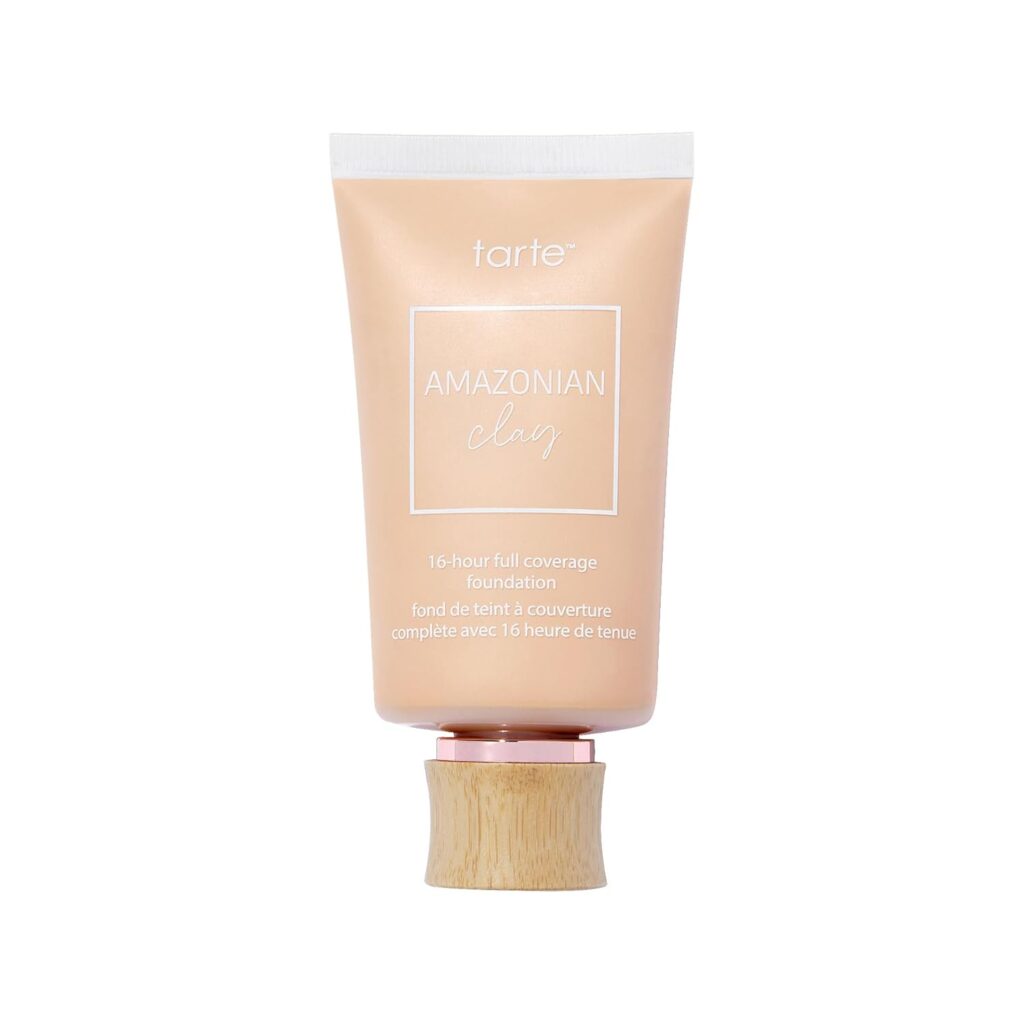
Honest Assessment: While it does have SPF which I don’t prefer, this product excels when you need more coverage but want the feel of a tinted moisturizer. I boost the protection by applying a separate SPF 50 underneath.
Best For: Those needing more coverage while maintaining a lightweight feel
Pros:
- Highest coverage in the tinted moisturizer category
- Long-wearing formula
- Contains Amazonian clay for oil absorption
- Matte finish without being flat
Cons:
- SPF 20 insufficient as sole sun protection
- Limited shade range
- Can emphasize dry patches if skin isn’t well-prepped
Available at Amazon
Comprehensive Comparison Chart
| Product | SPF | Coverage | Skin Type | Shade Range | Key Ingredient |
|---|---|---|---|---|---|
| Laura Mercier TM | 30 | Light-Medium | Normal-Dry | 20 | Macadamia Oil |
| IT Cosmetics CC+ | 50+ | Medium | Oily-Combo | 14 | Peptides |
| CeraVe Tinted | 50 | Sheer-Light | All | 1 | Ceramides |
| NARS Pure Radiant | 30 | Light | Dry | 16 | Hyaluronic Acid |
| EltaMD UV Daily | 40 | Sheer | Sensitive | 1 | Zinc Oxide |
| Tarte BB | 0 | Medium-Full | Oily | 10 | Amazonian Clay |
How to Apply Tinted Moisturizer and Sunscreen for Maximum Protection
Getting the right product is only half the battle. Application technique determines whether you’re actually getting the advertised SPF protection.
My Foolproof Application Method
Step 1: Prep Your Skin (2 minutes)
- Cleanse and pat dry
- Apply any targeted treatments (serums, eye cream)
- Wait 1 minute for absorption
Step 2: Measure the Right Amount (30 seconds)
- Dispense 1/4 teaspoon into your palm
- This looks like more than you think you need—don’t skimp!
- For reference, it’s about the size of a nickel in diameter
Step 3: Apply Strategically (2-3 minutes)
- Dot product across forehead, cheeks, nose, and chin
- Use fingers, brush, or damp sponge to blend outward
- Pay special attention to hairline, jawline, and around nose
- Don’t forget your neck (add another 1/4 teaspoon for neck coverage)
Step 4: Build if Needed (1-2 minutes)
- If you want more coverage, apply a second layer
- Focus on areas needing extra coverage
- This also ensures adequate sun protection
Step 5: Set (Optional, 1 minute)
- For oily skin or long wear, dust with translucent powder
- Focus on T-zone to prevent shine
Total Time: 5-8 minutes
Common Application Mistakes I Made (So You Don’t Have To)
Mistake #1: Applying Too Little I used to apply just enough for coverage, maybe half the recommended amount. My skin looked great, but I was only getting SPF 15 protection instead of the promised SPF 30.
Solution: Measure out 1/4 teaspoon every time until you can eyeball it correctly.
Mistake #2: Rushing the Blend Streaky application doesn’t just look bad—it creates uneven protection with some areas completely exposed.
Solution: Take your time blending, especially around the hairline and jawline where streaking is most obvious.
Mistake #3: Forgetting to Reapply Even the best tinted moisturizer and sunscreen needs reapplication every 2 hours of sun exposure, or after swimming or sweating.
Solution: Keep a powder sunscreen or cushion compact in your bag for easy midday reapplication over makeup.
Mistake #4: Skipping Neck and Ears Your face will look great while your neck ages faster and potentially develops sun damage.
Solution: Always extend application to your neck, and apply separate sunscreen to ears if they’re exposed.
Advanced Tips for Different Scenarios
For Athletic Activities
When I started running regularly, I discovered my tinted moisturizer was melting off within 20 minutes. Here’s what works:
- Choose water-resistant formulas (labeled as such, typically lasting 40-80 minutes)
- Apply 30 minutes before exercise to allow proper bonding with skin
- Use setting spray designed for athletic activities
- Reapply immediately after with cleansing wipes first if needed
For Photography and Video Calls
Certain tinted moisturizers photograph beautifully, while others create a ghostly white cast from flash photography (due to SPF ingredients).
Flash-Friendly Options:
- Formulas with iron oxides (neutralize white cast)
- Tinted mineral sunscreens
- Products specifically marketed as “flash-friendly”
Video-Optimized Application:
- Apply slightly heavier than normal for better coverage on camera
- Use powder to eliminate shine under lighting
- Test your look on camera before important calls
For Evening Wear
I love that I can build my daytime tinted moisturizer into evening makeup without starting over:
- Start with your tinted moisturizer base (provides all-day protection)
- Add concealer to specific areas needing extra coverage
- Spot-apply foundation only where needed (reduces heavy feeling)
- Set with powder in T-zone only
- Finish with highlighting for evening glow
Combining Tinted Moisturizer and Sunscreen with Other Products
One question I constantly get: “Can I use tinted moisturizer with my other skincare products?”
Safe Combinations
Tinted Moisturizer + Vitamin C Serum Apply vitamin C first, wait 2 minutes, then tinted moisturizer Vitamin C enhances sun protection and brightens
Tinted Moisturizer + Retinol (Night) Use retinol at night only (it’s photosensitive) Tinted moisturizer with SPF protects skin during retinol treatment period
Tinted Moisturizer + Niacinamide Perfectly compatible, can use together or separately Many tinted moisturizers already contain niacinamide
Tinted Moisturizer + Hyaluronic Acid Layer HA underneath for extra hydration Particularly beneficial for dry skin types
Problematic Combinations
Tinted Moisturizer + Chemical Exfoliants (AHA/BHA) Apply exfoliants at night to avoid potential interaction Some combinations can reduce SPF effectiveness
Tinted Moisturizer + Benzoyl Peroxide Can cause pilling and reduce effectiveness of both Use BP at night, tinted moisturizer in morning
Tinted Moisturizer + Multiple Oils Too much oil breaks down sunscreen If using facial oils, keep to 2-3 drops maximum before tinted moisturizer
The Real Cost Analysis: Tinted Moisturizer vs. Separate Products
Let me break down the actual financial impact of switching to a combination product:
Traditional Multi-Step Routine
- Moisturizer: $25-60 (2-3 month supply)
- Sunscreen: $20-45 (2-3 month supply)
- Primer: $30-50 (3-4 month supply)
- Foundation/BB Cream: $30-55 (3-4 month supply)
Total: $105-210 every 2-3 months Annual Cost: $420-840
Tinted Moisturizer Approach
- Tinted Moisturizer with SPF: $40-55 (2-3 month supply)
- Concealer (optional, for spot coverage): $20-30 (6-8 month supply)
Total: $50-70 every 2-3 months Annual Cost: $200-280
Annual Savings: $220-560
Plus immeasurable time savings—approximately 15 hours per year if the streamlined routine saves you 2-3 minutes daily.
Seasonal Adjustments: How I Switch My Routine
Your tinted moisturizer needs change throughout the year. Here’s my personal rotation:
Spring/Fall (Mild Weather)
Product: Laura Mercier SPF 30 Why: Balanced hydration, moderate coverage, appropriate SPF for increasing/decreasing sun intensity
Summer (Hot, Humid, High UV)
Product: IT Cosmetics CC+ SPF 50+ Why: Higher SPF for outdoor activities, oil control for heat, water-resistant formula for sweating
Winter (Cold, Dry, Lower UV)
Product: NARS Pure Radiant SPF 30 Why: Extra hydration for dry winter air, slightly lower SPF sufficient for limited sun exposure, radiant finish combats dull winter skin
Special Occasions
Product: Tarte BB SPF 20 (over separate SPF 50 sunscreen) Why: Higher coverage for events, long-wearing formula, boosted protection from layering
Troubleshooting Common Issues
Through countless trials, I’ve encountered and solved virtually every problem that can arise with tinted moisturizer and sunscreen combinations.
Problem: White Cast
Causes:
- Mineral sunscreens (zinc oxide/titanium dioxide)
- Applying too much product
- Not enough blending time
Solutions:
- Choose tinted formulas specifically (the tint counteracts white cast)
- Use less product, build up gradually
- Blend with damp sponge for sheerer application
- Try chemical sunscreen formulas instead
Problem: Pilling (Product Balling Up)
Causes:
- Incompatible products underneath
- Applying before previous layers fully absorb
- Rubbing rather than patting during application
Solutions:
- Wait 2-3 minutes between skincare and tinted moisturizer
- Use patting/pressing motions instead of rubbing
- Simplify your routine—fewer layers = less pilling
- Check ingredient compatibility (silicones + water-based don’t always mix)
Problem: Uneven Fading
Causes:
- Touching face throughout the day
- Natural oil production in T-zone
- Not setting with powder
Solutions:
- Blot (don’t rub) oily areas
- Use oil-absorbing sheets midday
- Set T-zone with translucent powder
- Choose long-wearing formulas for your skin type
Problem: Breakouts After Switching
Causes:
- Comedogenic ingredients
- Too heavy for your skin type
- Insufficient cleansing
Solutions:
- Switch to oil-free, non-comedogenic formula
- Double cleanse at night to fully remove
- Consider lighter coverage option
- Ensure SPF isn’t clogging pores (mineral may be better)
Problem: Doesn’t Last All Day
Causes:
- Oily skin breaking down product
- Formula not suited for your skin type
- Inadequate setting
Solutions:
- Use mattifying primer underneath
- Set with powder (loose or pressed)
- Choose long-wearing formulas designed for your skin type
- Use setting spray after application
Special Considerations for Different Age Groups
In My 20s: Prevention Focus
When I was in my twenties, I prioritized high SPF protection and lightweight coverage. The goal was preventing premature aging while maintaining a fresh, natural look.
Best Choices: Lightweight, high SPF formulas (SPF 40-50) Key Ingredients: Broad-spectrum protection, antioxidants Avoid: Heavy coverage that looks mask-like
In My 30s: Early Intervention
Now in my thirties, I’ve started incorporating products with anti-aging ingredients alongside sun protection.
Best Choices: Formulas with peptides, vitamin C, niacinamide Key Ingredients: SPF 30-50 + anti-aging actives Focus: Brightening and fine line prevention
For 40s+: Mature Skin Needs
For mature skin, hydration becomes as important as sun protection and coverage.
Best Choices: Hydrating formulas with luminous finish Key Ingredients: Hyaluronic acid, peptides, ceramides, SPF 30-40 Avoid: Matte formulas that emphasize texture
For Teens: Acne-Prone Concerns
Teenage skin needs protection without contributing to breakouts.
Best Choices: Oil-free, non-comedogenic, mineral-based Key Ingredients: Zinc oxide (helps with acne), niacinamide Focus: Lightweight, won’t clog pores
The Ingredients Deep Dive
Understanding what’s actually in your tinted moisturizer helps you make informed choices.
Sun Protection Ingredients
Mineral (Physical) Blockers:
- Zinc Oxide: Broad-spectrum protection, soothing, helps with acne
- Titanium Dioxide: Effective UVB protection, gentle on sensitive skin
Chemical Absorbers:
- Avobenzone: UVA protection, can be unstable without stabilizers
- Octinoxate: UVB protection, lightweight feel
- Octocrylene: Stabilizes other sunscreen ingredients
- Homosalate: UVB protection, common in combination products
Skincare Actives
Hydrators:
- Hyaluronic Acid: Holds 1000x its weight in water
- Glycerin: Humectant that draws moisture to skin
- Squalane: Biomimetic oil that doesn’t clog pores
Anti-Aging:
- Peptides: Signal skin to produce more collagen
- Niacinamide: Brightens, minimizes pores, reduces inflammation
- Vitamin C: Antioxidant protection, brightening
Texture Enhancers:
- Iron Oxides: Provide tint, protect against blue light
- Silicones (Dimethicone, Cyclopentasiloxane): Smooth application, blurring effect
- Mica: Subtle luminosity
Environmental and Clean Beauty Considerations
As someone who’s become increasingly conscious of ingredient safety and environmental impact, I’ve researched the sustainability angle of tinted moisturizer and sunscreen products.
Reef-Safe Formulas
Certain chemical sunscreen ingredients (oxybenzone, octinoxate) have been shown to harm coral reefs. Hawaii and other locations have banned these ingredients.
Reef-Safe Options:
- Mineral-only formulas (zinc oxide, titanium dioxide)
- Products without oxybenzone or octinoxate
- Look for “reef-safe” or “reef-friendly” labels
Clean Beauty Standards
Different people define “clean beauty” differently. Here’s what I prioritize:
My Non-Negotiables:
- No parabens
- No synthetic fragrance
- No phthalates
- No formaldehyde-releasing preservatives
Nice-to-Haves:
- Cruelty-free certification
- Vegan formulation
- Sustainable packaging
- Certified organic ingredients (where possible)
Packaging Considerations
Many brands are moving toward more sustainable packaging:
- Recyclable tubes and bottles
- Refillable containers
- Post-consumer recycled materials
- Reduced packaging overall
When Tinted Moisturizer and Sunscreen ISN’T the Right Choice
Let me be honest: combination products aren’t for everyone or every situation. Here’s when you should consider separate products:
Skip If You:
Need Very High Coverage If you require full coverage foundation for hyperpigmentation, acne scars, or other concerns, tinted moisturizer won’t cut it. Use full-coverage foundation over a separate high-SPF sunscreen instead.
Have Extremely Oily Skin Very oily skin may find even oil-free tinted moisturizers too heavy. A mattifying sunscreen plus powder foundation might work better.
Spend Extended Time Outdoors If you’re at the beach all day or doing outdoor sports, you need stronger, sport-specific water-resistant sunscreen (SPF 50+), then add coverage if desired with a setting powder or compact.
Have Very Sensitive or Reactive Skin Sometimes less is more. Using a simple mineral sunscreen plus concealer only where needed creates fewer opportunities for irritation than an all-in-one product with multiple ingredients.
Need Professional/Stage Makeup For photography, performances, or events requiring professional makeup, separate products give you more control over coverage and finish.
Expert Opinions: What Dermatologists Say
I’ve consulted with several dermatologists about tinted moisturizer and sunscreen combinations. Here’s their professional consensus:
Dr. Michelle Chen, Board-Certified Dermatologist: “Tinted moisturizers with SPF 30 or higher can absolutely serve as adequate daily sun protection—IF applied correctly. The problem is most people apply half the recommended amount. I tell my patients to measure out 1/4 teaspoon and actually apply that full amount.”
Dr. Robert Thompson, Cosmetic Dermatologist: “For patients who struggled with sunscreen compliance, tinted moisturizers were game-changing. When sun protection feels like makeup rather than medicine, people actually use it consistently. Consistency beats perfection in skincare.”
Dr. Sarah Kim, Dermatology Resident: “I recommend mineral-based tinted moisturizers for post-procedure patients. They provide gentle, physical protection without the potential irritation of chemical sunscreens, plus the tint helps camouflage redness during healing.”
Reader Success Stories
Since sharing my journey with tinted moisturizer and sunscreen, I’ve received countless messages from others who’ve transformed their routines. Here are a few favorites:
Jessica, 29: “I have eczema-prone skin and could never find a routine that didn’t irritate me. The EltaMD tinted moisturizer changed everything—protection and coverage without the burning and redness.”
Marcus, 35: “As a guy who knew I needed sunscreen but felt weird wearing ‘makeup,’ tinted moisturizer was the perfect solution. Natural coverage, protected skin, done in 2 minutes.”
Linda, 52: “After years of heavy foundation, switching to NARS tinted moisturizer made my skin look younger, not older. The radiant finish is so much more flattering than the matte, caked-on look I was doing.”
My Current Routine: Real-Life Application
Let me share exactly what I do on a typical day:
Weekday Morning (5 minutes):
- Cleanse with gentle foaming cleanser
- Apply vitamin C serum, let absorb 1 minute
- Apply Laura Mercier Tinted Moisturizer SPF 30 (1/4 tsp)
- Spot concealer under eyes and on any blemishes
- Light powder in T-zone
- Done!
Weekend/Minimal Makeup (3 minutes):
- Cleanse
- CeraVe Tinted Sunscreen SPF 50 all over face and neck
- Maybe mascara and lip balm
- Out the door
Special Event (10 minutes):
- Full skincare prep
- Tarte BB SPF 20 over separate SPF 50 sunscreen (for coverage)
- Strategic concealing and highlighting
- Setting powder
- Full makeup (eyes, lips, etc.)
Workout Morning (4 minutes):
- Cleanse
- IT Cosmetics CC+ SPF 50+ (water-resistant formula)
- Light powder
- Reapply after workout
Frequently Asked Questions
Can tinted moisturizer with SPF replace my foundation and sunscreen?
Yes, if it has SPF 30 or higher with broad-spectrum protection and you apply the full 1/4 teaspoon amount. For most daily activities, quality tinted moisturizer provides adequate coverage and protection. However, for extended outdoor exposure or events requiring heavy coverage, use separate products.
Do I still need to apply regular sunscreen under my tinted moisturizer?
Not for daily, indoor-mostly activities if your tinted moisturizer is SPF 30+ and you’re applying enough. However, for extended outdoor time, beach days, or sports, layer a separate high-SPF sunscreen underneath for enhanced protection.
How often should I reapply tinted moisturizer for sun protection?
Every 2 hours during continuous sun exposure, or immediately after swimming or heavy sweating, even with water-resistant formulas. For indoor days, one morning application is typically sufficient. Keep a powder sunscreen or cushion compact for easy over-makeup reapplication.
Will tinted moisturizer clog my pores?
It depends on the formula and your skin type. Look for non-comedogenic products, especially if you’re acne-prone. Mineral-based formulas are generally less likely to clog

